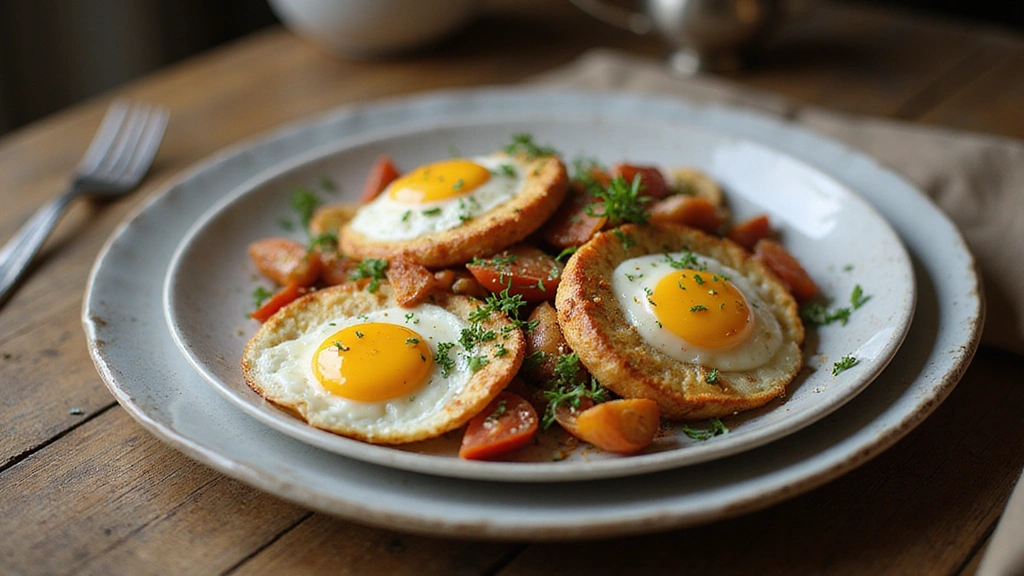Dutch oven breakfast recipes are the epitome of rustic, hearty cooking that brings comfort to the breakfast table.
With the ability to slow cook and infuse flavors, these recipes create a delicious harmony of textures and tastes that delight the senses.
I first encountered the magic of a Dutch oven breakfast while camping in the woods, where the aroma of sizzling ingredients mingled with the fresh mountain air.
Whether you’re gathering friends for a weekend brunch or preparing a cozy family breakfast, these recipes promise an unforgettable start to your day.
The History and Cultural Significance
• Dutch oven cooking dates back to ancient times, with origins in Europe where heavy cast-iron pots were used for slow-cooking meals over open fires.
• The method evolved as cooking techniques progressed, becoming popular in American households, especially during the 19th century.
• In many cultures, hearty breakfasts symbolize togetherness and the beginning of a new day, often served during family gatherings and special occasions.
• While variations exist globally, the authentic Dutch oven breakfast maintains its commitment to simple, wholesome ingredients that celebrate the art of communal cooking.
Recipe Overview
Nutritional Information (per serving)
Ingredients
Essential Equipment Guide
Dutch Oven: This heavy cast-iron pot is essential for achieving the even heat distribution necessary for slow-cooking breakfast recipes. Look for one with a tight-fitting lid for optimal moisture retention.
Spatula: A sturdy spatula is important for stirring and serving without damaging the Dutch oven’s surface. Silicone or wooden options are best to avoid scratches.
Measuring Cups and Spoons: Accurate measurements are crucial for balancing flavors and ensuring the right texture. A set that includes both dry and liquid measuring tools will cover all needs.
Preparation Methods
Chopping Vegetables: Properly chopping vegetables ensures even cooking and a balanced distribution of flavors. Aim for uniform pieces to promote consistent texture throughout the dish.
Cracking Eggs: Crack eggs into a separate bowl before adding them to the mixture to avoid shell fragments. This technique also allows you to check for freshness before incorporation.
Layering Ingredients: Layering ingredients in the Dutch oven promotes even cooking and flavor melding. Start with meats, then vegetables, and finally pour the egg mixture on top for a well-cooked breakfast.
Step 1: Prepare Ingredients
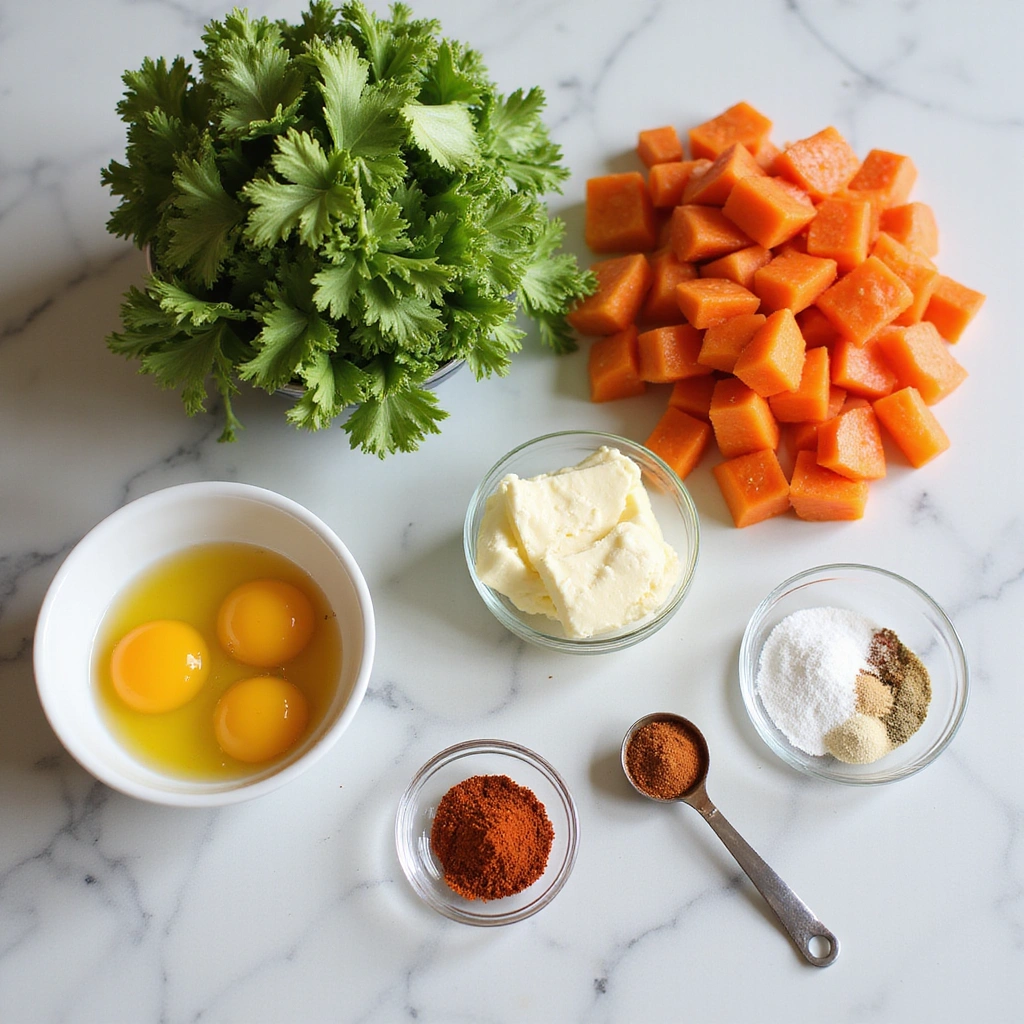
Gather all your ingredients before beginning to ensure a smooth cooking process.
Chop the vegetables into uniform pieces for even cooking.
Crack the eggs into a separate bowl and beat them well.
Measure out the milk and seasonings to have everything ready for assembly.
Step 2: Cook the Meats
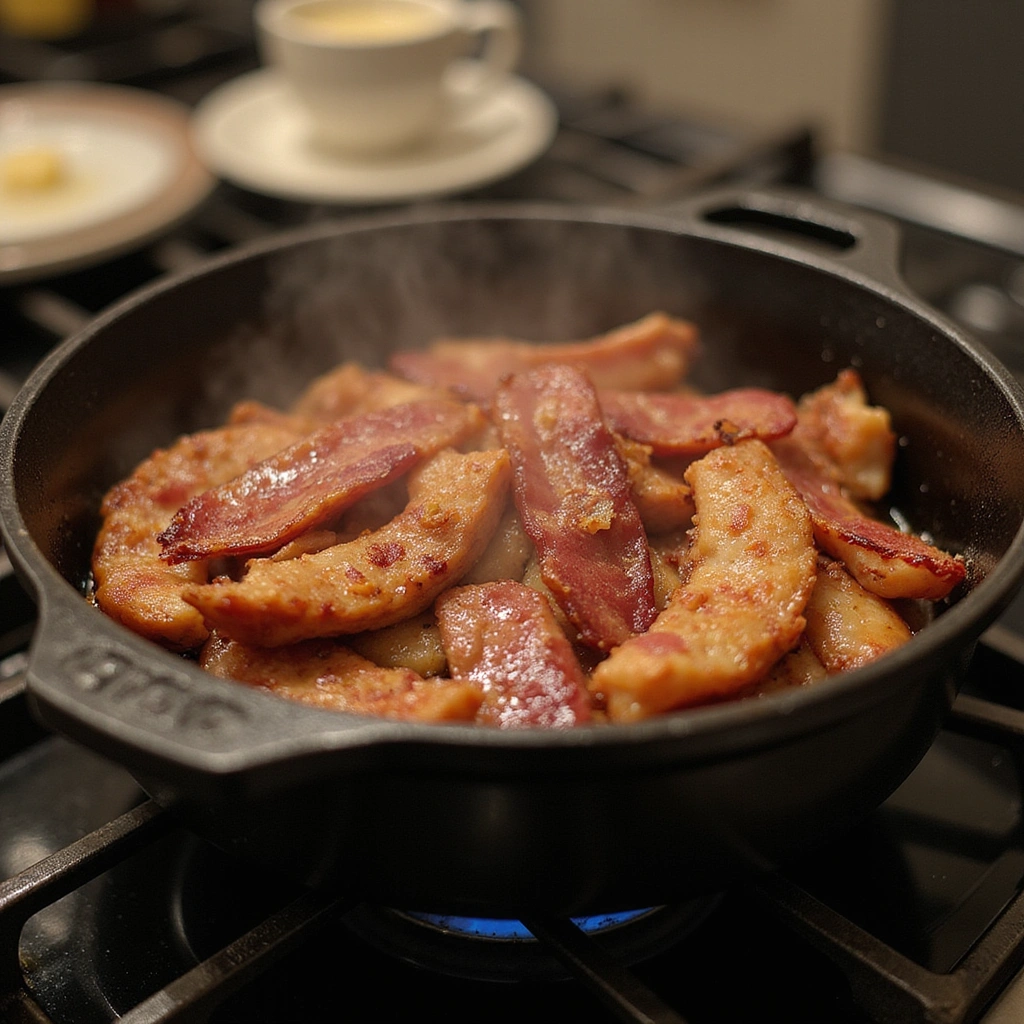
Heat your Dutch oven over medium heat until hot.
Add the crumbled bacon and sausage, stirring occasionally until browned and crispy.
This step infuses the pot with incredible flavors that will elevate the entire dish.
Remove the meat from the pot and set aside, leaving the drippings for added flavor in the next steps.
Step 3: Sauté the Vegetables
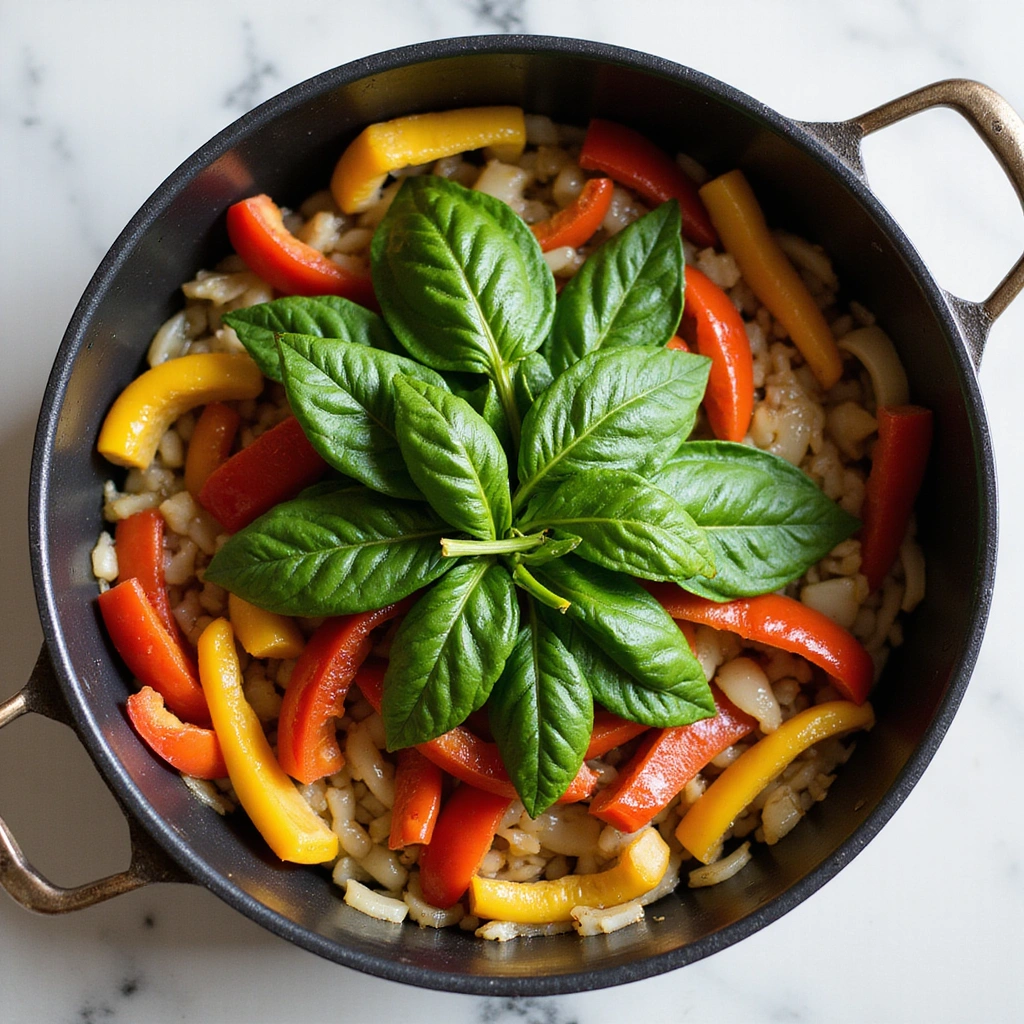
In the same Dutch oven, add the chopped onions and bell peppers.
Sauté for 3-5 minutes until they are softened and fragrant.
Add the spinach last, allowing it to wilt quickly.
This method enhances the vegetables’ natural sweetness and brings depth to the dish.
Step 4: Combine Ingredients
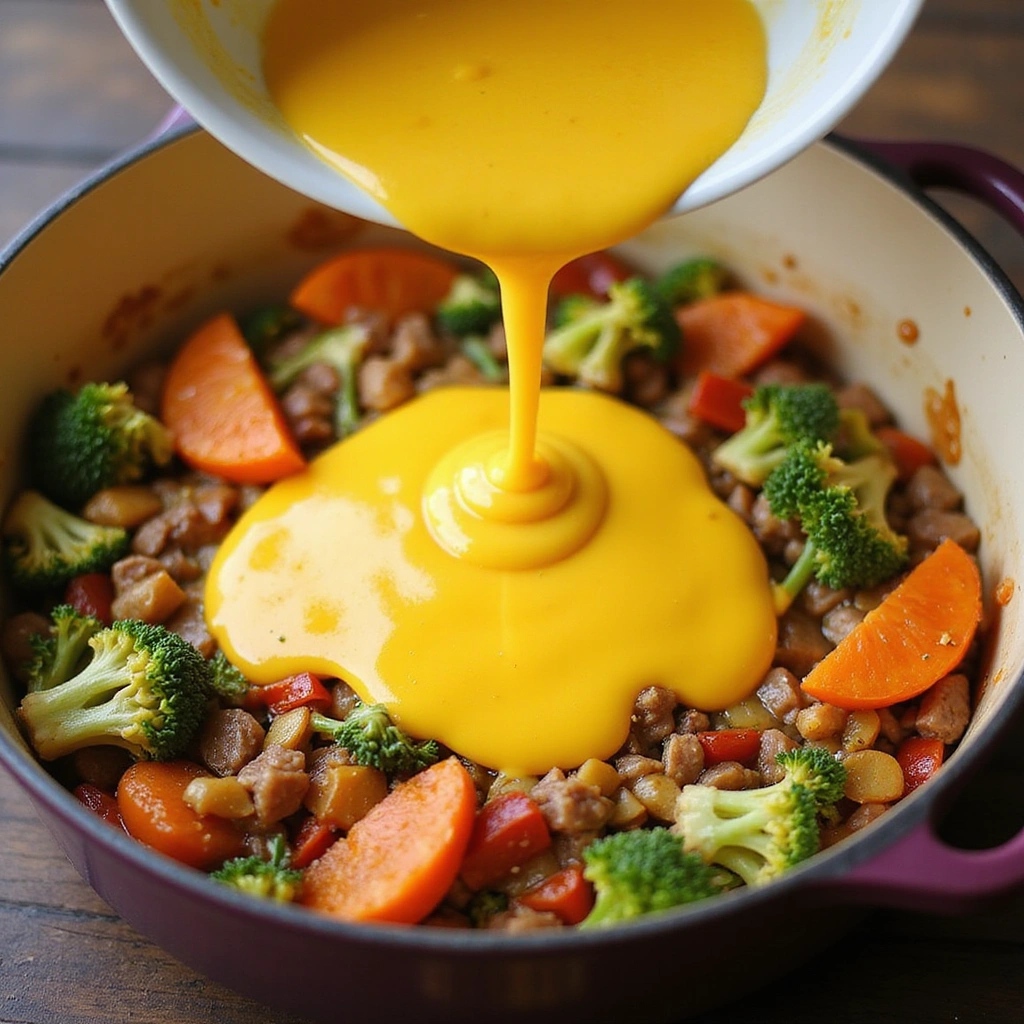
Return the cooked meats to the Dutch oven, mixing them with the sautéed vegetables.
Pour the beaten eggs and milk mixture evenly over the top.
Gently stir to combine all ingredients without over-mixing.
This step ensures every bite is packed with flavor and texture.
Step 5: Bake the Breakfast
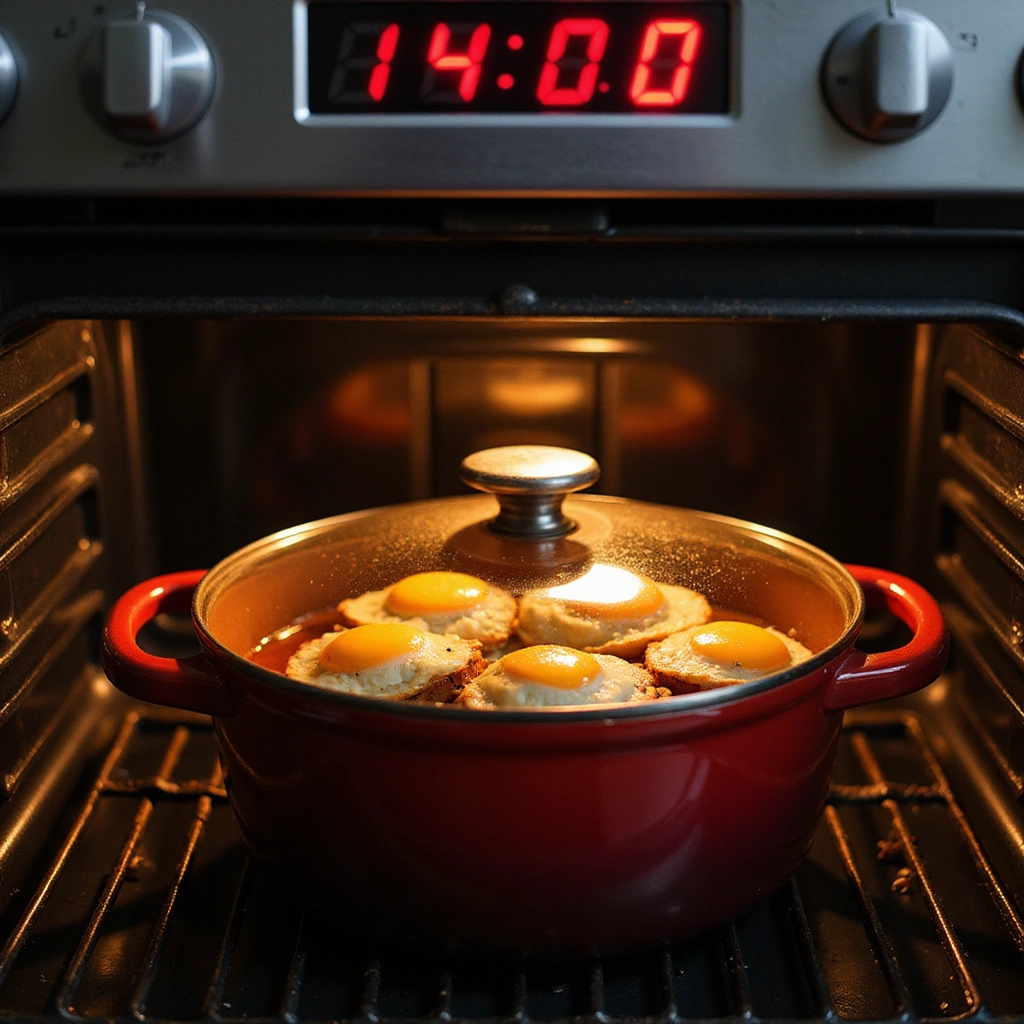
Cover the Dutch oven with its lid and transfer it to a preheated oven at 350°F (175°C).
Bake for about 30 minutes until the eggs are set and slightly puffed.
Check for doneness by gently shaking the pot; it should be firm but not overly dry.
This baking process allows flavors to meld beautifully while ensuring an even cook.
Step 6: Check for Doneness
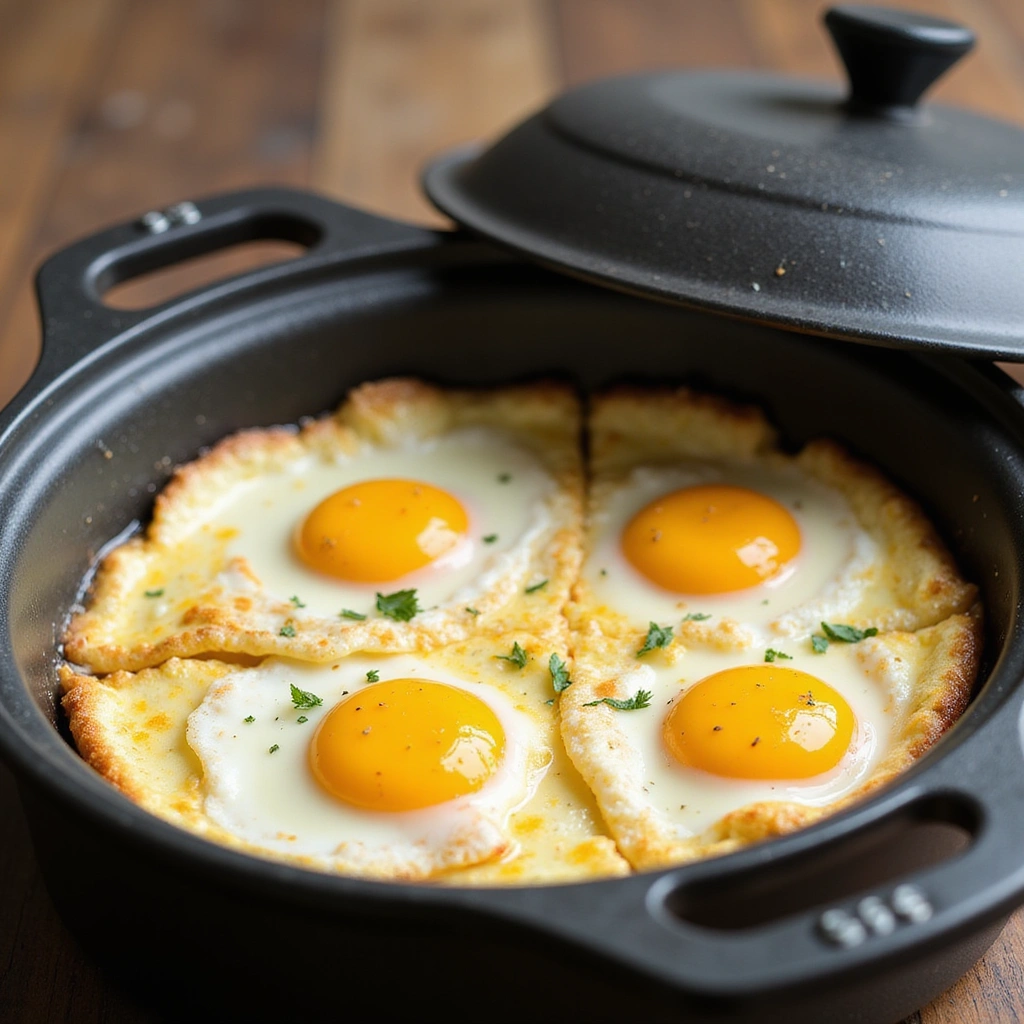
After 30 minutes, carefully remove the Dutch oven from the oven.
Remove the lid and check if the eggs are fully set in the center.
If they jiggle or appear wet, return them to the oven for an additional 5-10 minutes.
This step is crucial to ensure a perfectly cooked breakfast that is not soggy.
Step 7: Cool and Serve

Let the Dutch oven cool for a few minutes before serving.
Using a spatula, cut into portions and serve directly from the pot for a rustic presentation.
You can garnish with fresh herbs like parsley or chives for a pop of color.
This rustic serving style adds to the charm of the dish and encourages sharing.
Step 8: Enjoy!
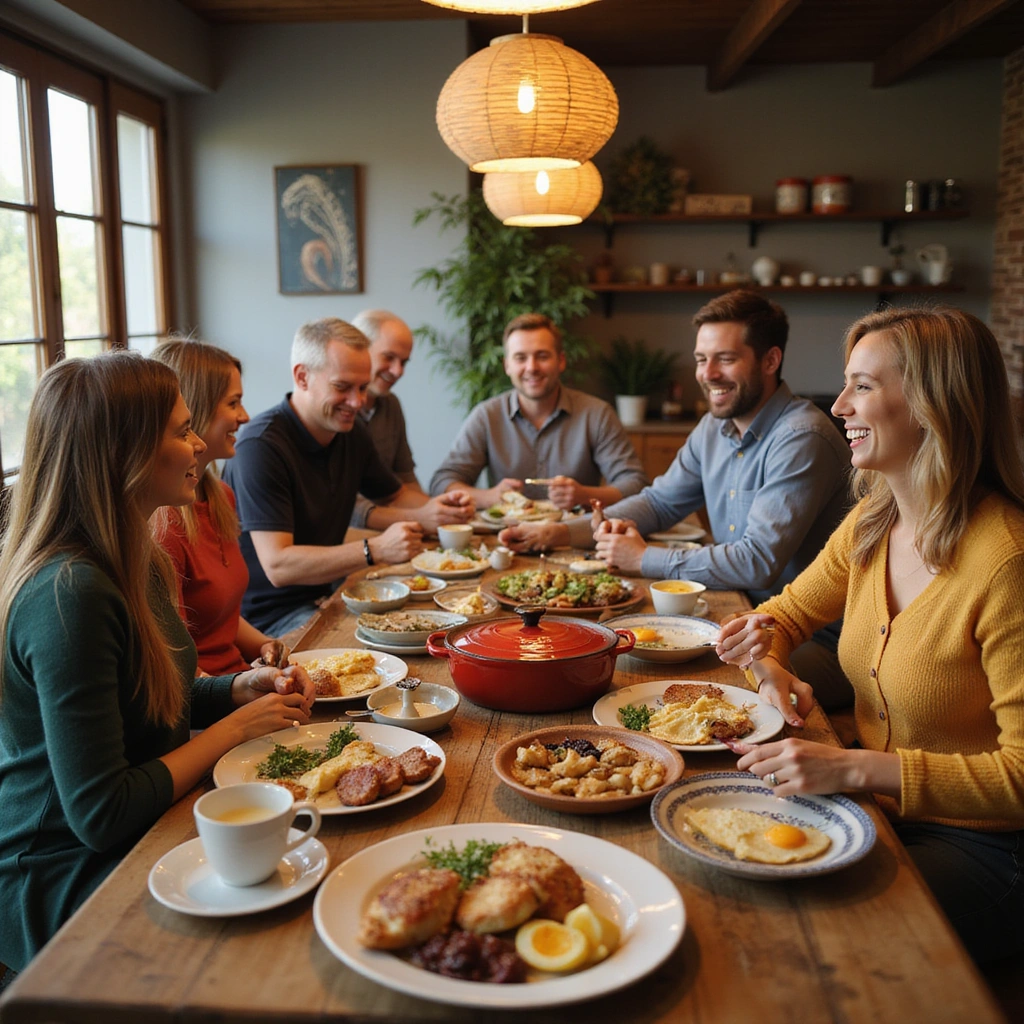
Gather your family or friends around the table to enjoy this hearty breakfast together.
Encourage everyone to help themselves directly from the Dutch oven for a communal experience.
Pair with fresh fruit or coffee for a complete meal.
This final step is all about savoring the flavors and appreciating the time spent cooking together.
Critical Timing and Temperature Guide
Cooking Meats: Cook bacon and sausage for about 7-10 minutes on medium heat until crispy. Look for a deep golden-brown color. Avoid undercooking for food safety.
Sautéing Vegetables: Sauté onions and peppers for 3-5 minutes until soft. They should be translucent but not browned. Overcooking can lead to mushy vegetables.
Baking: Bake at 350°F for 30 minutes or until eggs are set. The top should be slightly puffed and not wet. Keep an eye on it to prevent over-baking.
Pro Tips for Dutch Oven Breakfast Recipes Rustic And Delicious
• Ingredient Selection: Choose farm-fresh eggs and high-quality meats for the best flavor.
• Preparation Secret: Let the beaten eggs sit for a few minutes before adding them to enhance fluffiness.
• Temperature Management: Ensure your Dutch oven is preheated to retain heat during cooking.
• Texture Enhancement: Whisk eggs vigorously to incorporate air for a fluffier texture.
• Flavor Layering: Use herbs and spices in stages to build complexity in flavor.
• Make-Ahead Strategies: Prep vegetables the night before and store them in the fridge to save time.
• Restaurant-Quality Finishing Touches: Drizzle with a little olive oil or top with crumbled feta just before serving.
• Equipment Optimization: Use a well-seasoned Dutch oven to prevent sticking and enhance flavor.
Troubleshooting Common Issues
• Texture Too Dense: This can happen if the eggs are overmixed or overcooked. To fix, ensure to stir gently and check for doneness early.
• Flavors Unbalanced: If your dish lacks flavor, consider adjusting seasonings. Taste and add more salt or pepper as needed.
• Burnt Bottom: This may occur if the heat is too high. Use a lower heat setting and ensure even cooking by stirring.
• Undercooked Eggs: If the center is runny, return to the oven with the lid on for a few extra minutes. This ensures thorough cooking.
• Too Greasy: Skim excess fat from the top after cooking. Use leaner meats or drain off excess grease before adding eggs.
Variations and Regional Differences
• Spanish Frittata: This version includes chorizo, potatoes, and a mix of bell peppers, offering a spicy twist.
• Italian Strata: Incorporates layers of bread soaked in egg mixture, combined with cheeses and herbs for a rich flavor.
• Southwestern Hash: Features black beans, corn, and jalapeños, bringing a zesty kick to the traditional recipe.
• Modern Interpretations: Consider adding quinoa or using plant-based sausage for a healthier, contemporary spin on the classic.
Food Science Behind the Recipe
• Emulsification: The combination of eggs and milk creates an emulsion that results in a creamy texture throughout the dish. Understanding this helps achieve a smooth consistency.
• Maillard Reaction: Cooking the meats and vegetables at high heat promotes browning, enhancing flavor through this chemical reaction.
• Coagulation: Eggs solidify when heated, and knowing the right temperature helps prevent overcooking, ensuring a tender final product.
Frequently Asked Questions
What’s the most common mistake people make when preparing Dutch oven breakfast? Overcooking the eggs is the most common mistake. Keep a close eye on the baking time to ensure they remain fluffy and tender.
Can I prepare components of this dish in advance? Yes, you can chop vegetables and cook meats a day ahead, storing them in airtight containers in the fridge.
How do I adapt this recipe for dietary restrictions? Use egg substitutes for a vegan version and plant-based sausages to cater to vegetarians.
What’s the best way to store and reheat leftovers? Store in an airtight container in the fridge for up to 3 days. Reheat gently in the oven or microwave until warmed through.
Can I freeze this dish? Yes, freeze in portions for up to 2 months. Thaw overnight in the fridge before reheating.
What wine or beverages pair best with this dish? A light-bodied white wine or fresh-squeezed orange juice complements the flavors well.
How can I scale this recipe up for a crowd? Simply double the ingredients and use a larger Dutch oven or multiple pots to ensure even cooking.
What side dishes complement this recipe best? Fresh fruit salad or crispy potatoes make excellent accompaniments.
How do professional chefs elevate this dish for restaurant service? Adding gourmet garnishes like microgreens or truffle oil can elevate presentation and flavor.
Serving and Presentation Guide
• Traditional Presentation: Serve directly from the Dutch oven with a rustic charm, garnished with fresh herbs on top.
• Modern Plating Ideas: For a contemporary look, plate individual portions with a sprig of microgreens and a drizzle of olive oil.
• Accompaniment Suggestions: Serve with crusty bread or a light salad for a balanced meal.
• Special Occasion Presentation: Elevate with elegant serving dishes and additional garnishes like edible flowers for a festive touch.
Conclusion
Dutch oven breakfast recipes offer a wonderful way to bring family and friends together around the table.
I hope you feel inspired to try this rustic and delicious dish in your own kitchen.
Each bite is a celebration of flavors and memories, making breakfast truly special.

